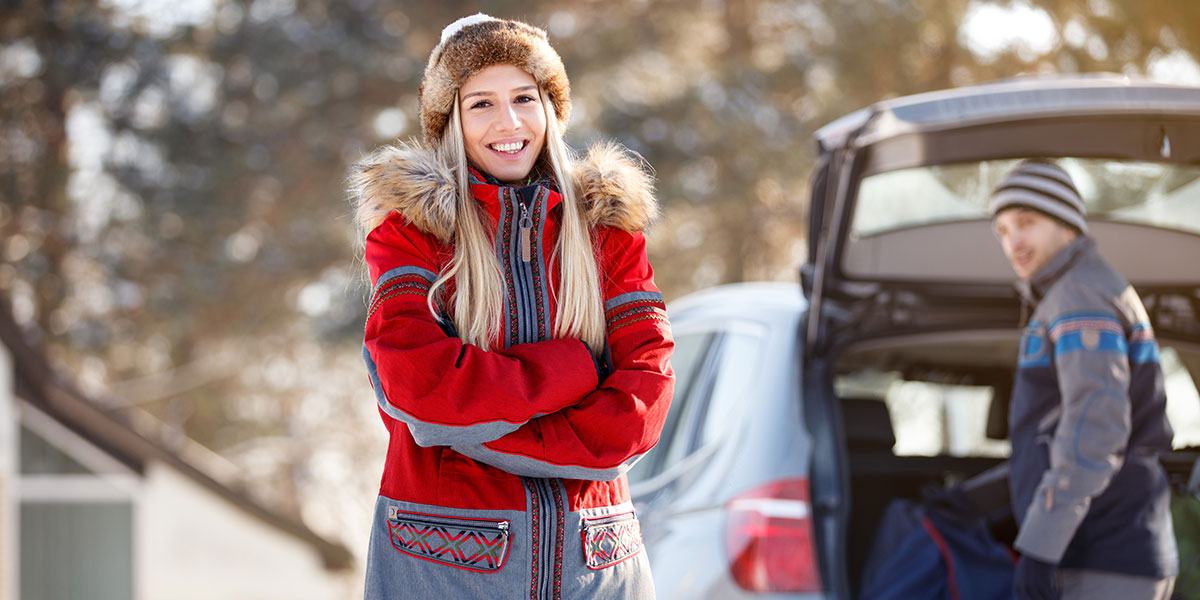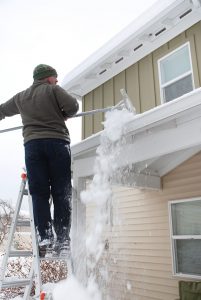
One thing HouseCheck Home Inspectors see all too often is insufficient winter preparation (winterizing), both inside and out.
Of course, weather conditions vary across the U.S., so not all regions get fifty feet of snow or six months of sub-zero temperatures. Still, even in less severe climates, thoughtful preparation before the seasons change can help preserve your winter comfort and safety, while keeping Mother Nature’s frigid hands off your purse strings.
Winter Weatherizing Checklist
All the tips and tricks for cold weather home preparations shared below offer some benefit in safety, savings or cost avoidance. Even if you aren’t the planet’s handiest handyperson (or don’t live with one), you’ll find some things you can do to stay more comfortable this winter, and possibly cut utility bills in the process. Other suggestions will require professional services, which, for conscientious owners, is usually well worth the investment.
Focus on These Key Areas
Once you decide to don your home-winterizing hat, the possibilities may seem overwhelming.
Especially if you factor in prepping garages, sheds or other outbuildings. However, with a little planning and forethought, your chosen tasks can be done in phases–if possible, before the weather turns too foul to do them safely. This is what we recommend.
Home Exterior
Here are the main things to check (or have checked by a professional) on the outside of your home:
- Trim, siding, deck–check all wood for rot and make sure paint, caulking and weather seal
 ants are all in good repair.
ants are all in good repair. - Gutters–keep them free of old leaves and other material to prevent water from backing up against the house and compromising trim and siding.
- Roof–look for loose, damaged or missing tiles, and while you’re at it, examine the chimney, including the flashing; if you’re leery of going aloft, inspect from the ground with binoculars or contact a roofing professional.
- Masonry & hard surfaces–inspect porch, patio, driveway and other concrete areas for signs of cracking, and reseal, if necessary; this will prevent water from seeping in, freezing and expanding existing cracks.
- Foundation Vents – If your home has a crawl space under the floor with closeable foundation vents, be sure to close them to prevent potential freezing of underfloor water pipes. And be sure to re-open them in the Spring for proper ventilation.
Home Interior
Here are the main things to check (or have checked by a professional) inside your home.
- Heating system–replace the filter and do so once per month during frigid months; hire a licensed specialist to inspect and tune-up the rest of the system.
- Water heater–if you have an older model, wrap it in a blanket of insulation to reduce fuel costs; get tips online or from your local utility.
- Fireplace–inspect the firebox and flue and have any excess soot or creosote removed by a professional chimney sweep.
- Windows and doors–check for drafts, loose frames or cracked panes; apply fresh caulking and weather-stripping, where needed.
- Water-supply lines–to prevent pressurized pipes from freezing, bursting and flooding your (vacant or occupied) property), insulate them with foam sleeves or other manufacturer recommended material.
- Detectors–test and change the batteries in your smoke alarms and carbon monoxide detectors.
Yard & Garden
- Exterior watering systems–to prevent faucet leaks and freezing, shut off the inside valves (if you have them), disconnect garden hoses, and thoroughly drain the spigots (if you have inside valves); winterizing the irrigation system, however, is more involved, so leave it to your gardener or landscaping pro.
- Lawn–reseed patchy areas and plant spring-flowering bulbs; critter-proof where necessary with lengths of chicken wire; if you really love your lawn, put a mulching blade on your mower and mulch (dry) leaves directly into the grass for extra cold-weather nourishment.
- Trees–cut away any overhead branches that could take on ice and fall on people or property; but don’t go prune-happy and start slashing everything in sight; instead, consult your local nursery expert or arborist for best pruning practices for your yard’s trees and shrubs.
- Lawn care equipment–safely prepare gas-operated tools for winter storage, including mowers, blowers and chain saws, by lubricating them and draining them of fuel.
Be Sure: With a Pre- or Post-Winter Home Inspection
Of course, this is not an exhaustive list and home systems vary greatly in age, condition and complexity. And even if preparations are meticulous, some problems may still go undetected.
That’s why, in winter or spring, it’s smart to request a HouseCheck home inspection. Our licensed, professionally trained experts carefully inspect more than 400 interior and exterior items, and deliver your detailed inspection report within 24 hrs. (often the same day). Schedule today or preview our informative FAQ to learn more.
####
[Sources/References]


Leave A Comment